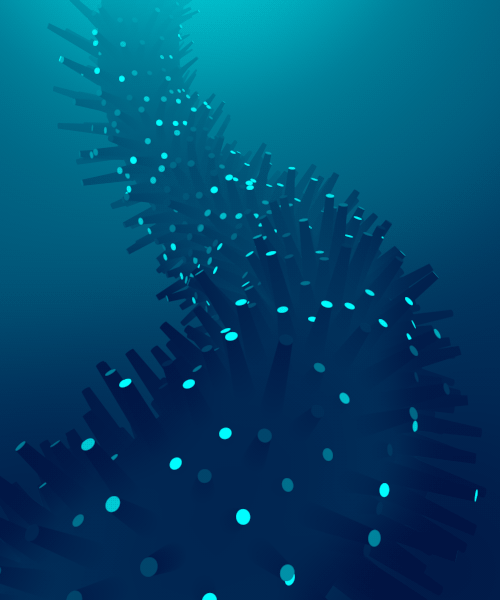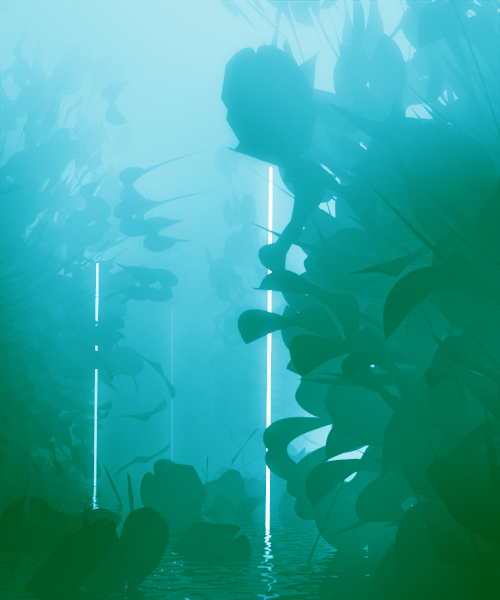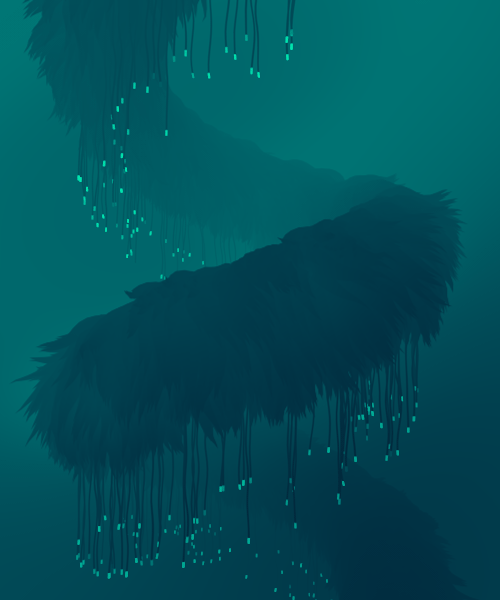The Harvard Computers (Hint: They Were Women, Not Machines!)

The Harvard Computers (Hint: They were women, not machines!)
Today is the birthday of Annie Jump Cannon, born December 11, 1863, known as one of ‘Harvard’s Computers’. She is credited along with Edward Pickering as the creator of the Harvard Classification Scheme which remains the foundation of today’s stellar classification system.
One of a dozen women hired by Pickering to do the hard work of identifying, classifying and cataloging hundreds of stellar objects, Cannon distinguished herself as the brightest of the bright and rose finally to a full professorship before her death in 1941. Pickering hired the first of his ‘computers’ in a pique of frustration, noting that his maid could probably do better work than he was getting from his students. Indeed, he hired his maid, Williamina Fleming, who became the first of his ‘computers’ and quickly distinguished herself. Pickering was pleased enough with her work (and lower wages) that he soon built a team comprised entirely of women to compose the catalog. Cannon was hired a little later to oversee a catalog of the southern skies. While no eponym celebrates her name, her contribution (along with the remaining group at Harvard) as well as the countless women throughout history to impact science, math, politics and all human endeavor, today we remember and say Happy Birthday. A true gifted scientist and true pioneer, gone but not forgotten. As in most human endeavors, nameless and tireless women support the work of more celebrated men with little or no credit. Newton said of his work: ’If I have seen further it is by standing on the shoulders of giants.’ Today we acknowledge that many of those giants were and are women.
Image curently in the public domain courtesy New York World-Telegram and the Sun Newspaper.
Today’s post is for hb-she does twice the work and asks for half the credit. Our boys are who they are because of her.
More Posts from Secretagentpeptidebond and Others





Gases + Electric Field
Click on pictures for more information.
Source


Gale pin design✨
We were just discussing in class today in the context of ubiquinated H2B. Neat!

Ubiquitin is a regulatory protein found in most tissues of many walled-celled organisms. Originally known as ubiquitous immunopoietic polypeptide, ubiquitin was discovered in 1975 and its mechanism identified by a team including Aaron Ciechanover, Avram Hershko, and Irwin Rose of the Fox Chase Cancer Center, for which they were awarded the Nobel Prize in Medicine in 2004. Ubiquitins act as traffic control agents within the cell, directing other proteins to various compartments within the cell including tagging proteins for destruction.
The word ubiquitin was formed in 1975 from the English adjective ubiquitous which dates only from 1837. Ubiquitous derives from the noun ubiquitary which dates from 1580s from the Latin preposition ubi meaning where and que meaning any, also, ever. Ubiquitary (meaning everywhere) originally referred to the Luthern doctrine that Christ is omnipresent.
Representation of ubiquitin protein, highlighting the secondary structure. α-helices are coloured in blue and β-strands in green. The sidechains of the 7 lysine residues are indicated by orange sticks. The two best-characterised attachment points for further ubiquitin molecules in polyubiquitin chain formation (lysines 48 & 63) are labelled.
Image of ubiquitin protein courtesy rogerdodd under a Creative Commons 3.0 license, used with permission.
Silica nanoparticles could be used to repair damaged teeth

Researchers at the University of Birmingham have shown how the development of coated silica nanoparticles could be used in restorative treatment of sensitive teeth and preventing the onset of tooth decay.
The study, published in the Journal of Dentistry, shows how sub-micron silica particles can be prepared to deliver important compounds into damaged teeth through tubules in the dentine.
The tiny particles can be bound to compounds ranging from calcium tooth building materials to antimicrobials that prevent infection.
Professor Damien Walmsley, from the School of Dentistry at the University of Birmingham, explained, “The dentine of our teeth have numerous microscopic holes, which are the entrances to tubules that run through to the nerve. When your outer enamel is breached, the exposure of these tubules is really noticeable. If you drink something cold, you can feel the sensitivity in your teeth because these tubules run directly through to the nerve and the soft tissue of the tooth.”
“Our plan was to use target those same tubules with a multifunctional agent that can help repair and restore the tooth, while protecting it against further infection that could penetrate the pulp and cause irreversible damage.”
The aim of restorative agents is to increase the mineral content of both the enamel and dentine, with the particles acting like seeds for further growth that would close the tubules.
Previous attempts have used compounds of calcium fluoride, combinations of carbonate-hydroxypatite nanocrystals and bioactive glass, but all have seen limited success as they are liable to aggregate on delivery to the tubules. This prevents them from being able to enter the opening which is only 1 to 4 microns in width.
However, the Birmingham team turned to sub-micron silica particles that had been prepared with a surface coating to reduce the chance of aggregation.
When observed using high definition SEM (Scanning Electron Microsopy), the researchers saw promising signs that suggested that the aggregation obstacle had been overcome.
Professor Zoe Pikramenou, from the School of Chemistry at the University of Birmingham, said, “These silica particles are available in a range of sizes, from nanometre to sub-micron, without altering their porous nature. It is this that makes them an ideal container for calcium based compounds to restore the teeth, and antibacterial compounds to protect them. All we needed to do was find the right way of coating them to get them to their target. We have found that different coatings does change the way that they interact with the tooth surface.”
“We tested a number of different options to see which would allow for the highest level particle penetration into the tubules, and identified a hydrophobic surface coating that provides real hope for the development of an effective agent.”
Our next steps are to optimise the coatings and then see how effective the particles are blocking the communication with the inside of the tooth. The ultimate aim is to provide relief from the pain of sensitivity.
University of Birmingham
Nanotechnology World Association
On the care and keeping of your scientist
Congratulations on adopting a scientist! Regardless of their field they will require much coffee, free food, and love. Here are some field specific tips for keeping your scientist happy and healthy!
Biology: make sure they don't get overly invested in their model organism by reminding them about the flaws inherent in their system on a regular basis, but also make sure to join in when they criticize other models in favor of their own
Chemistry: don't let them do that 'just one more reaction' at 10 pm. make sure they get out of the lab and see the sun on a regular basis. try to keep them from partying too hard when they do leave the lab
Geology: humor their rock puns but don't let the lick the rocks (they will tell you they need to lick the rocks to identify them, but don't fall for it)
Astronomy: try not to let them become completely nocturnal. point out nice stars to them and look suitably impressed by their "pictures" of planets that don't look like anything to you
Physics: take them to the park on a regular basis to remind them that things larger than subatomic particles exist. bring a frisbee or a ball to play catch with and be impressed by their ability to calculate trajectories
Math: always make sure to have free batteries for their calculators and a mathmatica user guide on hand. Humor them when they tell you why space without angles is important
Ecology: make sure they remember to wear sunscreen and keep an eye on them in the field. Remind them to come inside and analyze their data occasionally
Psychology: don't mention Freud or ever call them a soft or social science, but make sure you gently remind them that social factors can impact reproducibility and try to keep them from drawing sweeping conclusions about the inherent nature of humanity
Neuroscience: be suitably impressed by their newest experiment and then remind them that people are not mice as often as possible
Computer Science: make sure they take breaks while debugging by limiting their supply of coffee. Nod and smile when they go off on indexing and arrays. Make sure they always have a rubber duck.
Make sure to keep your scientist away from engineers unless they have been properly socialized to interact in a translational household. The most important thing is to remember to hug your scientist on a regular basis and remind them that there is life outside the lab

-
 olfamannai liked this · 7 years ago
olfamannai liked this · 7 years ago -
 faesopsfables reblogged this · 8 years ago
faesopsfables reblogged this · 8 years ago -
 mysterysciencegirlfriend3000 reblogged this · 8 years ago
mysterysciencegirlfriend3000 reblogged this · 8 years ago -
 chippedmoon liked this · 8 years ago
chippedmoon liked this · 8 years ago -
 awakeningofpsyche liked this · 9 years ago
awakeningofpsyche liked this · 9 years ago -
 secretagentpeptidebond reblogged this · 9 years ago
secretagentpeptidebond reblogged this · 9 years ago -
 imsosickoffoxmulder reblogged this · 9 years ago
imsosickoffoxmulder reblogged this · 9 years ago -
 surferdudette1990 reblogged this · 9 years ago
surferdudette1990 reblogged this · 9 years ago -
 thebookbug liked this · 9 years ago
thebookbug liked this · 9 years ago -
 okashiras reblogged this · 9 years ago
okashiras reblogged this · 9 years ago -
 sawwah44 liked this · 9 years ago
sawwah44 liked this · 9 years ago -
 39n liked this · 9 years ago
39n liked this · 9 years ago -
 glasses-of-champagne liked this · 9 years ago
glasses-of-champagne liked this · 9 years ago -
 pappaphu liked this · 9 years ago
pappaphu liked this · 9 years ago -
 buaaahhh liked this · 9 years ago
buaaahhh liked this · 9 years ago -
 frostd-snow liked this · 9 years ago
frostd-snow liked this · 9 years ago -
 inmeteredlines liked this · 9 years ago
inmeteredlines liked this · 9 years ago -
 fooniedoer-blog liked this · 9 years ago
fooniedoer-blog liked this · 9 years ago -
 monkoverboard reblogged this · 9 years ago
monkoverboard reblogged this · 9 years ago -
 monkoverboard liked this · 9 years ago
monkoverboard liked this · 9 years ago -
 evolunatik reblogged this · 9 years ago
evolunatik reblogged this · 9 years ago -
 nuchtchas liked this · 9 years ago
nuchtchas liked this · 9 years ago -
 sk1m7 reblogged this · 9 years ago
sk1m7 reblogged this · 9 years ago -
 sk1m7 liked this · 9 years ago
sk1m7 liked this · 9 years ago -
 theredperiil reblogged this · 9 years ago
theredperiil reblogged this · 9 years ago -
 mortifiedcat liked this · 9 years ago
mortifiedcat liked this · 9 years ago -
 azhdarcho reblogged this · 9 years ago
azhdarcho reblogged this · 9 years ago -
 white-3yed-pea-blog reblogged this · 9 years ago
white-3yed-pea-blog reblogged this · 9 years ago -
 white-3yed-pea-blog liked this · 9 years ago
white-3yed-pea-blog liked this · 9 years ago -
 pityloved-blog reblogged this · 9 years ago
pityloved-blog reblogged this · 9 years ago -
 pityloved-blog liked this · 9 years ago
pityloved-blog liked this · 9 years ago -
 sofiyanesterova-blog liked this · 9 years ago
sofiyanesterova-blog liked this · 9 years ago -
 mrcrowley101 liked this · 9 years ago
mrcrowley101 liked this · 9 years ago -
 lukasbele-blog liked this · 9 years ago
lukasbele-blog liked this · 9 years ago -
 astronauticall reblogged this · 9 years ago
astronauticall reblogged this · 9 years ago -
 campallgay liked this · 9 years ago
campallgay liked this · 9 years ago -
 soundflowvillage reblogged this · 9 years ago
soundflowvillage reblogged this · 9 years ago -
 richiedowns83 liked this · 9 years ago
richiedowns83 liked this · 9 years ago -
 notwiselybuttoowell reblogged this · 9 years ago
notwiselybuttoowell reblogged this · 9 years ago -
 5296randy liked this · 9 years ago
5296randy liked this · 9 years ago -
 firstlightofeos liked this · 9 years ago
firstlightofeos liked this · 9 years ago -
 noisierandnoisier reblogged this · 9 years ago
noisierandnoisier reblogged this · 9 years ago -
 humantrampoline85 reblogged this · 9 years ago
humantrampoline85 reblogged this · 9 years ago -
 humantrampoline85 liked this · 9 years ago
humantrampoline85 liked this · 9 years ago









